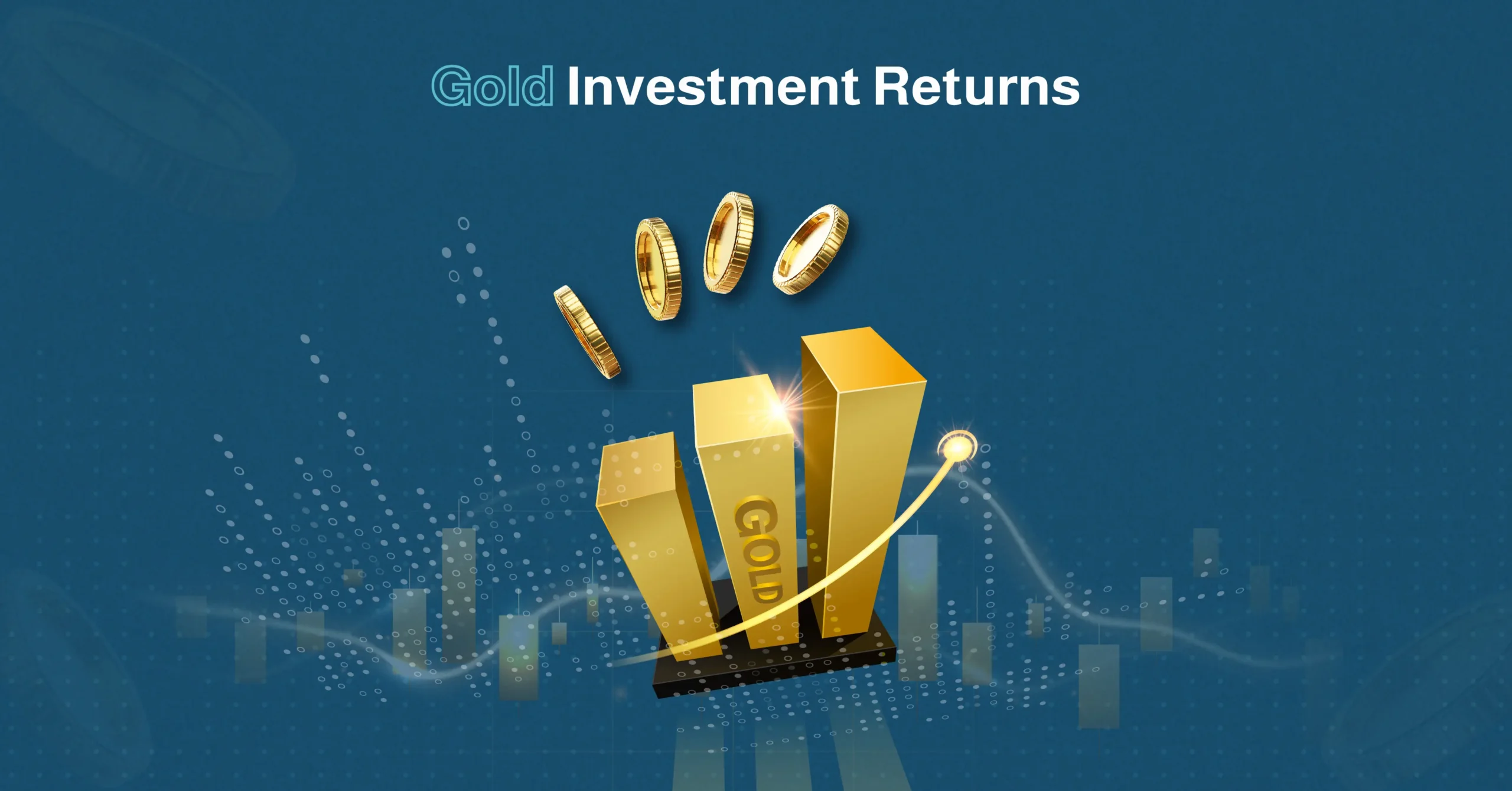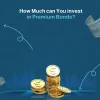Gold has long been a symbol of wealth and a commodity that has driven people to extreme lengths. While we like to believe ourselves a little more civilized, there is still a raw desire for the precious metal. This is likely because gold has retained value and stability and is a reliable store of wealth. Geopolitical tensions, market volatility, and inflation concerns have led to a surge in gold prices as it is seen as a safe-haven asset. As an investor, if you are looking to hedge against economic uncertainty, then gold could be a great investment and will diversify your portfolio. We will be looking into the enduring appeal of gold, analyzing its historical performance, comparing it to other asset classes, and taking a look at some strategies to maximize your returns.
You can start investing now from the Gamma Asset Investment Platform
Understanding Gold Investment Returns
Gains and losses from investing in gold would be the returns, which will encompass price appreciation and, occasionally, interest, although this is rarely the case. This is due to the fact that gold does not generate dividends or interest. The returns are driven by changes in market price.
Factors Influencing Gold Investment Returns:
1- Inflation:
Gold acts as a hedge against inflation, due to rising prices, the purchasing power of fiat currency (national currency not backed by gold) declines. When this occurs, gold prices tend to increase, preserving the investors wealth.
2- Interest rate:
There is a trend with interest rates and gold prices, as the interest rates decrease, the non-yielding asset increases in appeal. As prices are based on scarcity the more demand, the higher the prices. The inverse is true when the interest rate increases, yield-bearing assets become more appealing, and the price of gold decreases.
3- Geopolitical events:
When countries are experiencing geopolitical tension or periods of economic unrest, investors are more likely to seek out safe-haven assets such as gold, which will drive up the asset price. Historically, we saw this on a large scale with the 1973 oil crisis and the 2014 Crimea Annexation.
Forms of Gold investment:
1- Physical Gold:
As you can imagine, this would include jewelry, coins, and bars of gold. It is the tangible product, and while it provides direct ownership, it means secure storage and insurance.
2- Gold Exchange-Traded Funds (EFTs):
This option allows you to have shares in gold without the hassle of secure storage. The funds are invested in the physical commodity and are traded on the stock exchange. This method will track spot prices and offer liquidity just like stocks.
3- Digital Gold:
Don’t let the term “digital” fool you, these trades are still linked to physical gold but the buying and selling make use of the digital space. These online sales can see investors taking physical delivery of the gold, or it can be stored with the provider. Think of this method as online shopping, but for gold.
Why Investors Choose Gold for Long-Term Wealth
Due to its scarcity, durability, and universal acceptance, gold is a trusted source of value and has been for centuries, which would stand to reason that it is a favoured investment for many seasoned investors. Gold’s value remains stable or even appreciates during times of volatility, economic downturn. or market instability and provides a hedge against other asset classes that may underperform in such conditions. It makes the perfect addition to a portfolio and offers diversification due to its low correlation with stocks and bonds.
Historical Performance of Gold Investments
The last century has seen gold as a dynamic asset, with periods of significant fluctuations that were influenced by a range of economic and geopolitical factors. Let’s take a little walk down memory lane and see exactly what has affected the gold price.
Early 20th Century to 1970s: Stability Under the Gold Standard
Gold had a long run of stability, under the gold standard, from the 1920s to the early 1970s, when gold was priced at $20.68. The gold standard is a system that links the value of a currency to a specific amount of gold, this is meant to limit price volatility.
Post-1971: Increased Volatility and Growth
The gold standard was abandoned in 1971, which led to a surge in gold prices. This, coupled with high inflation and geopolitical tension, was due to the unrest caused by the Cold War and the oil crisis. Saw gold prices peak at over $800 per ounce. This peak was short-lived, with the price declining to $270 per ounce in the 2000s. Once again, we see an all-time high with a price increase of 1197% since 2000 to 2025. At the time of writing, the gold price is sitting at a rounded $3300 per ounce. One of the largest factors driving the price increase is the limited supply of the precious metal, as investors have been scrambling to add gold to their portfolio as a safe-haven asset.
Long-Term Returns: Gold vs. Other Asset Classes (2000-2025)
| Asset class | Approx. 2000 Price | 2025 Price/ Value | Total Return | Average Annual Return (CAGR) |
| Gold | $275/oz | ~ $3300/oz | +1097% | ~9,8% |
| S&P 500 Index | ~1,400 pts | ~5 300 pts | +278% | ~5,6% |
| Real Estate (US Average) | $ 126,000 (avg. home) | $ 375,000 (avg. home) | +197% | ~4,5% |
| Global Bond Index | Base 100 (2000) | ~270 (2025 est) | +170% | ~4,1% |
| Bitcoin | Not available pre-2009 | ~$ 70,000 (2025 peak) | Extremely high | Highly volatile |
* The CAGR (Compound Annual Growth Rate) figures are approximations for illustrative purposes only. The values will adjust when you shift markets to different regions.
Gold Investment Returns in Saudi Arabia
We have limited access to data regarding gold investment returns in Saudi Arabia over the past decade, since gold is a traded commodity with pricing being consistent globally, we can infer that the global trends were consistent with what was experienced in the Saudi markets. Local economic conditions and currency exchange rates would affect the pricing too.
Key Influencing Factors
Inflation, Currency fluctuations, interest rates, and economic and political instability all contribute to gold’s performance. The fact that it is a safe-haven asset makes it appealing to investors wanting to diversify their portfolio as well as hedging against potential downturns in the market.
Gold is a safe bet as an investment, especially during periods of economic stress, which will usually see the price of gold increase. Gold investment returns seem to be at an all-time high. As mentioned, it is a perfect way to diversify your portfolio and mitigate risks.
Comparing Gold to Other Asset Classes
| Criteria | Gold | Stocks (S&P 500) | Real Estate | Global Bonds | Bitcoin |
| Return potential | Moderate, strong in crisis periods | High (long-term growth) | Moderate to high (Location dependent) | Low to moderate | Very high (speculative) |
| Volatility | Low to moderate | Moderate to high | Low to moderate | Low | Very high |
| Inflation hedge | Strong | Weak to moderate | Strong | Weak | Uncertain |
| Liquidity | Moderate (easy to sell, not instant) | High (can sell instantly) | Low (sales can take a while) | High | High (24/7 markets) |
| Income generation | None | Dividends possible | Rental income potential | Interest income | None |
| Risk Profile | Defensive (safe-haven asset) | Growth-oriented | Asset-backed, location-specific risk | Conservative | Speculative, highly volatile |
| Best Use in Portfolio | Diversification, Crisis protection | Growth engine | Long-term wealth and income | Capital preservation | High-risk speculative portion. |
Maximizing Your Gold Investment Returns
Firstly, it is important to choose the right type of gold investment for your needs, as each has its own risk profile.
- Physical Gold is tangible but has costs associated with storage and insurance.
- Gold EFTs and mutual funds are great at diversifying your portfolio and are fairly easy to trade.
- Digital gold storage is no longer a problem, as the physical product can be stored by a third-party. Trading is convenient and is undertaken online.
- Gold mining stocks are volatile as they are based on the company’s performance, but offer higher potential.
Second, ensure that you time your entry and exit strategically. Gold is usually a long-term investment, but timing can be improved by watching macroeconomic signals.
- Buy when gold costs are down, which is common during low inflation or strong USD periods.
- Sell or hold onto your gold or shares during eriods of high inflation, geopolitical tension, or currency weaknessm this is when the prices are the highest.
Next, hedge and diversify. Gold is the perfect companion for a diversified portfolio. Experts recommend the following:
- Having 5-10% of your portfolio as gold will offset stock and currency risks.
- Don’t expect gold to have massive growth, but rather use gold to hedge against inflation and market volatility.
Then you will want to monitor your fees and premiums, as there are a few things that can eat into your returns.
- Management fees on gold ETFs are usually deducted annually.
- High premiums on physical gold
- Storage and insurance costs, you will want to compare providers, look for low-fee options.
Finally, think long-term and stay informed. Gold isn’t good for short-term returns; it is not flippable, but rather a wealth preservation asset. Assess and rebalance your portfolio to maintain a desired gold allocation. Follow trends, watch central bank policies, interest rates, and global conflict indicators.
More topics can be read on the Gamma blog
How to Evaluate and Monitor Your Gold Investment Returns
Like any investment, we need to balance risk and reward. Even though gold is termed a safe-haven asset, there is still risk attached.
| Rewards | Risks |
| Safe-haven asset during periods of economic and geopolitical crisis | Gold doesn’t generate income, no dividends or interest |
| Hedge against inflation and currency depreciation to reduce overall risk. | Short-term price volatility. |
| Portfolio diversification and reduced risk | Storage and insurance costs if you invest in the physical asset. |
| High liquidity for ETFs and digital gold | Lower long-term returns when compared to equities |
| Strong historical performance, especially during times of uncertainty. | Market timing risk, if you buy while the price is high, you will limit future gains. |
Gold really is a girl’s best friend, well, an investor’s best friend would be more accurate. Gold should form part of every investor’s portfolio, with it making up an allocation of at least 5 to 10%, which will protect against periods of volatility. This safe-haven asset can take various forms, so finding the right one or the right mix for your portfolio will depend on your needs and financial long-term goals.
FAQ: Quick Answers to Key Questions
How has gold performed as an investment in Saudi Arabia over the past decade?
Gold has seen a steady increase in gains in Saudi Arabia, which is reflective of global trends. During periods of inflation and market uncertainty, we saw prices surge.
What are the tax implications of investing in gold within the Kingdom?
At time of writing, physical gold investments are subject to VAT which is 15%, but investment-grade gold which is 99%+ purity is exempt from tax. It is advisable that you keep upto date with a financial advisor or check the latest ZATCA guidelines.
How does gold investment compare to other asset classes in terms of returns?
During economic downturns, gold has consistently delivered strong long-term returns. While equities may perform better during bull markets, gold’s connection to other assets makes it a valuable tool for risk management and diversification.













